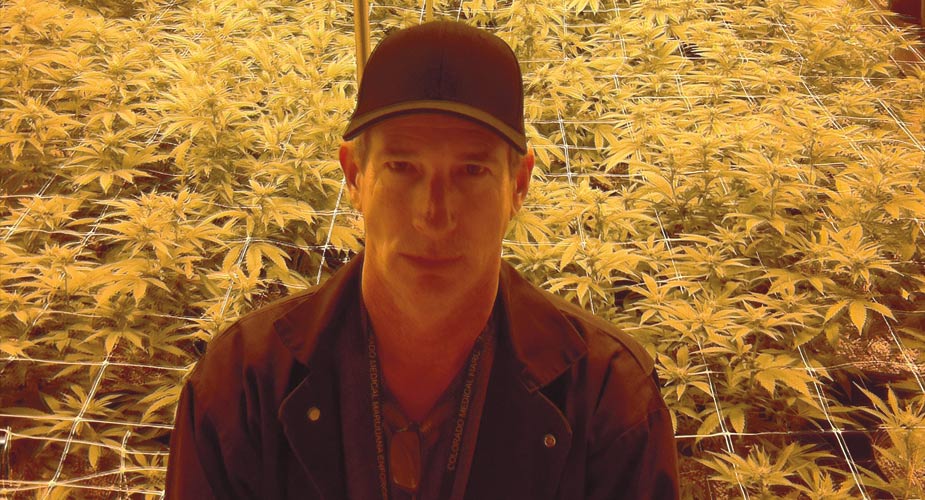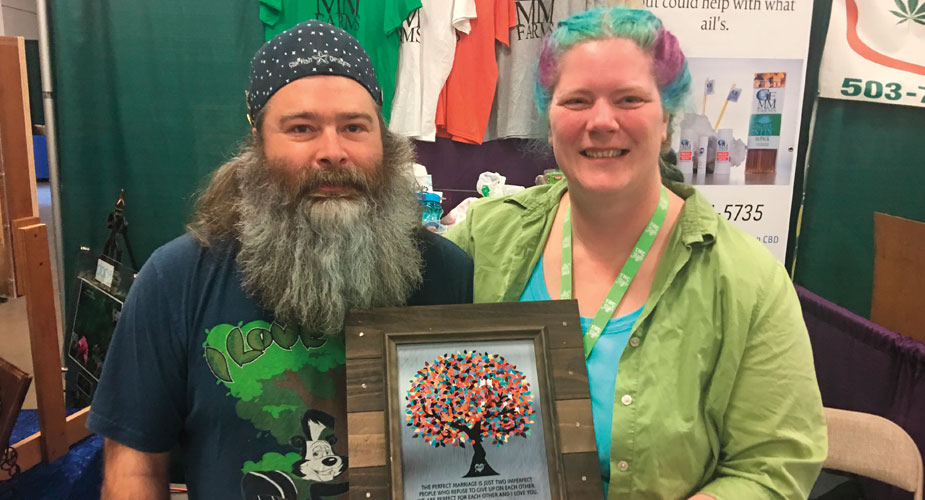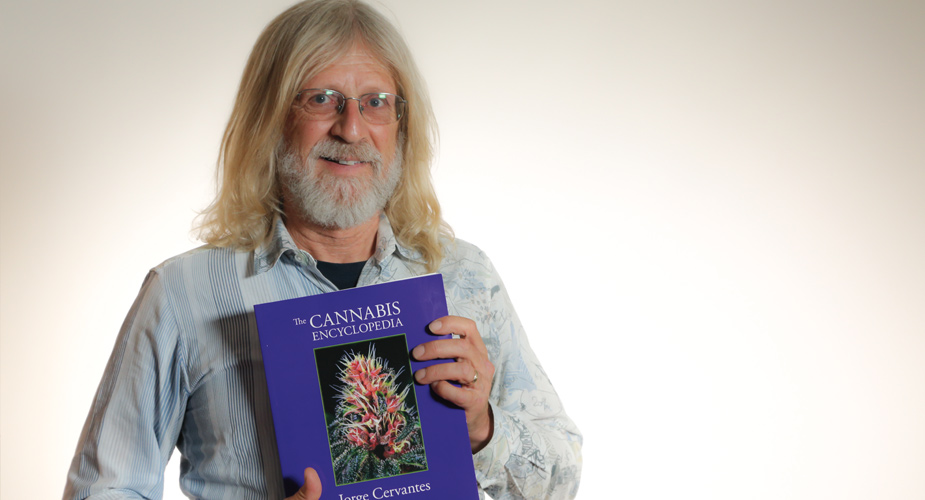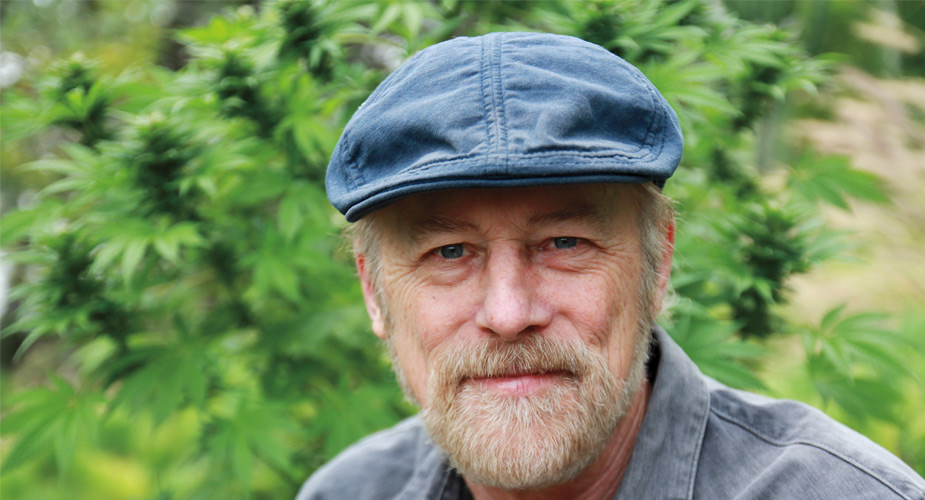Can you imagine being able to integrate the terpene profile of say… Strawberry Cough, with the buzz of a high THC strain such as Bruce Banner? Cannabis pioneer, Ken Morrow, sees a future where plant matter can be separated into hundreds of compounds, making custom strains and extractions even more viable. He is helping to create a cannabis industry based on extensive research – whether talking about separating cannabis components or the entourage effect of flower. Last year, Morrow released a book called “Marijuana Horticulture Fundamentals” that took seven years to write and edit and is filled with 35 years of knowledge and groundbreaking research in isolating terpenes and other cannabinoids for extraction.
Before releasing his “magnum opus”, Ken Morrow was already a household name. He is a long-time contributor to High Times magazine, who has accepted more of his articles than any other author. Ken is also on the Cannabis Business Times editorial board of advisors, and a monthly columnist. He has developed and refined new strains as well as cannabis-related substances that have contributed to the rapid evolution of the plant today. He is also known for developing a method of extraction using the sun that produces a cannabis oil much like Rick Simpson Oil (RSO) years before the famous concentrate was released.
In addition, Morrow is the visionary behind modern dry sieve hash & bubble hash, which is water and ice-based. A renaissance man, Ken established Trichome Technologies in 1994 as a molecular genetics research company. Based in California, this company consults with cannabis businesses on system design and manufacturing. They are committed to helping create the processes that result in unique products for the burgeoning industry. Consistent procedures and quality control is very important in the modern world of cannabis, and Ken Morrow is the face of the scientific progression of the plant and its compounds to supply cannabis consumers with exactly the effects they are looking for.
Stoner Magazine (SM): How did you begin your relationship with the cannabis plant?
Ken: I started growing when I was 12 years old and started growing hydroponically at 13. Since then I have bred over 200 different types of genetics and was the first one to get my genetics tested by Mahmoud ElSohly at the University of Mississippi in 1996.
From there, I started doing super refined extracts, what you would know as dabs, and wrote an article called “The Art and Science of Cleaning Concentrates, Part 1 and 2 with Mel Frank.” Part one was about hydrocarbon extraction and part two was about ethanol extraction. It explained the history of the Budder King, the person who coined the phrase “Budder” (referring to cannabis butter of course)!
In the midst of that, I started doing experimentation and stumbled upon a methodology of terpene isolation that didn’t involve the use of harmful heat like distillation. Most of the distillates that are being sold today are Hydrosols compounds, not pure terpene compounds.
SM: Extracts of this nature require huge amounts of properly grown cannabis, to achieve high-quality results. Currently, the legitimate demand for technology and the legislative processes limit access to either, but within five years Ken feels that will change.
Ken: Five years from now, a farmer will be able to plant his 30 acres, harvest it all, then take it to a factory that will separate the terpenes and cannabinoids in oil or powdered form from the bugs, their filth, and all other undesirable or unusable physical and environmental issues associated with the harvest.
I have a business plan. I am trying to do a three-hectare state-of-the-art greenhouse in Central Valley, California. It would be one of the largest in the United States or Canada! We are on hold until the permits come out.
There are a few towns like Desert Hot Springs that are allowing large-scale production. I hear there are large-scale grows selling cubicles for seven million dollars each! The powers that be are handing out those permits and those permit holders will have priority over those who are not producing now.
Cart before the horse ya know!?
These farmers will go to their congressional leaders and push for interstate commerce. I feel that once large corporations get involved (after the 5-year cap in California is lifted) it will be them that lobby for the change. Once that change happens, it’s a free-for-all!

Ken: Dr. Sue Sisley applied for permits to do a PTSD study for veterans using marijuana. She was awarded those permits and the DEA sent her 20 pounds of pot from the University of Mississippi (NIDA, the only Federally approved marijuana grow facility on the planet).
It failed microbial testing (actual test results found unacceptable
levels of mold, yeast, and trace amounts of lead).
They also said it was 13% THC and it was only 8%, which invalidates the whole study.
The most current study on the face of the earth regarding cannabis for PTSD patients and the US government sends her infected garbage marijuana. Lovely!
I currently consult for an East Coast gastroenterologist who is investigating single terpene and cannabinoid applications for his patients. He is looking at the synergistic effects of isolated and combined elements in his studies. One of the things that mystifies me every day about the cannabis plant is, how you can consume this plant, and if you have glaucoma it knows to fix that, or if you have arthritis it goes to that.
What a magic plant! How does it do all the things it does?
SM: Where did you start in the industry, Ken, and where do you see the future of cannabis going?
Ken: I was raised by High Times magazine. Grew my first plant at 12.
It was a while before I got my hands on Mel Frank and Ed Rosenthal’s book (Marijuana Grower’s Guide) to figure things out.
The foundation of everything I know came from Mel Frank, Thomas Alexander from Sinsemilla Tips, Ed Rosenthal, Robert Connell Clarke, and Jorge Cervantes. All those guys are my older brothers. I am a direct product of them.
I believe the next generation will take cannabis to the next level because they have a different mindset. It is a career opportunity for them like the tech industry. I am excited to see what they do!
Ken is currently finishing up a companion book to Marijuana Horticulture Fundamentals. It will dig deeper into the processes involved with large scale cannabis production, and we at Stoner Magazine are excited to dig our teeth into the cutting-edge research and the effects on the industry, and the future of cannabis production.




